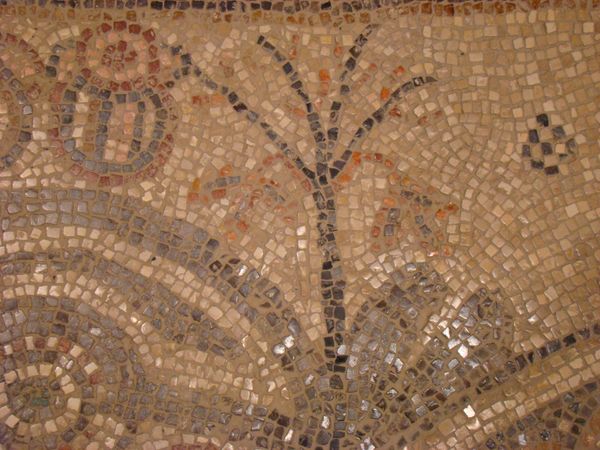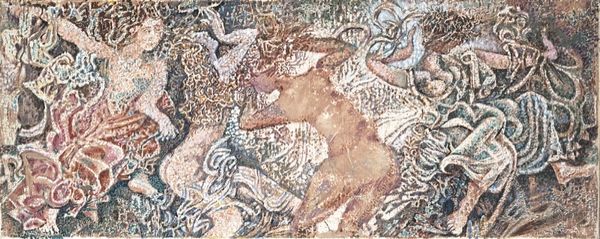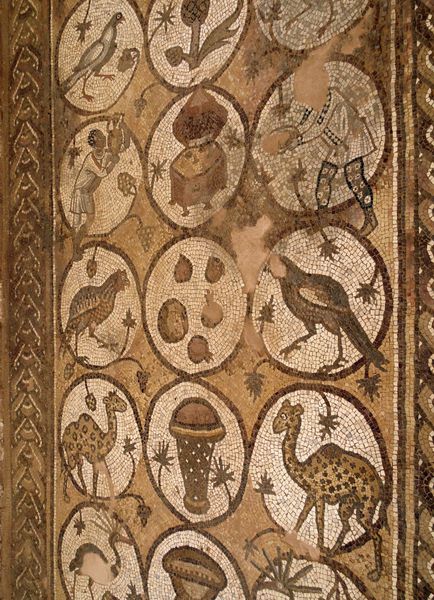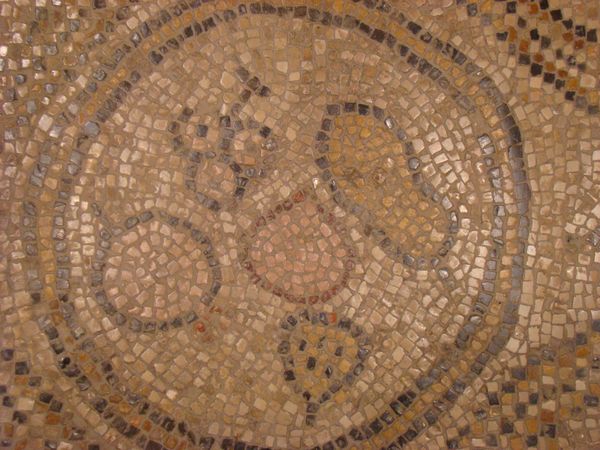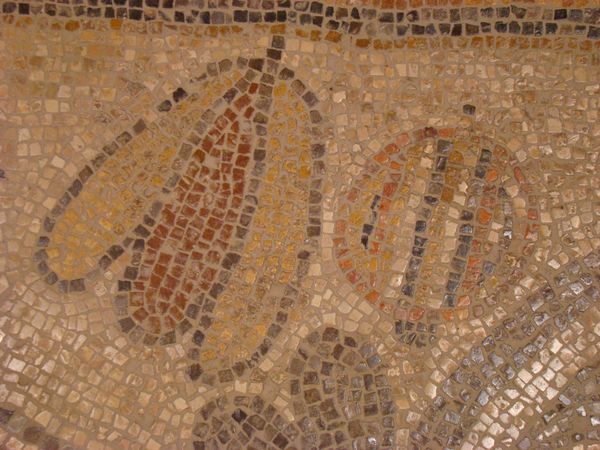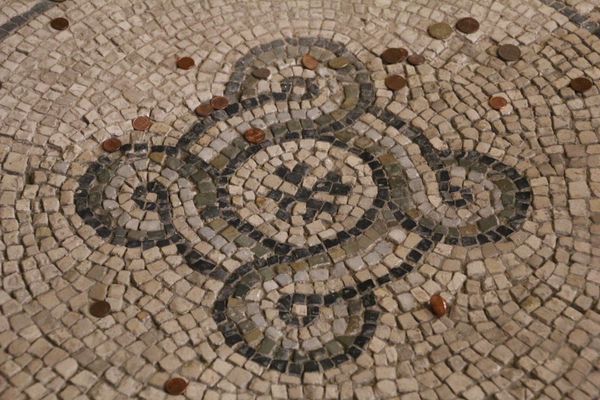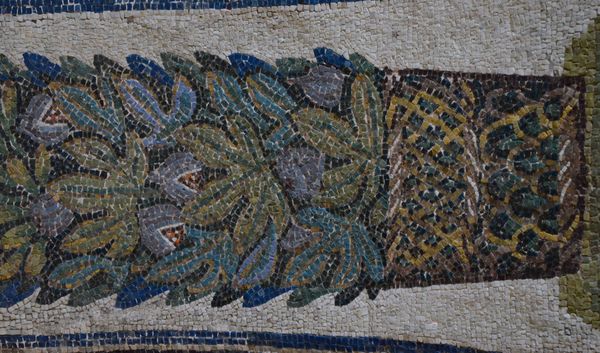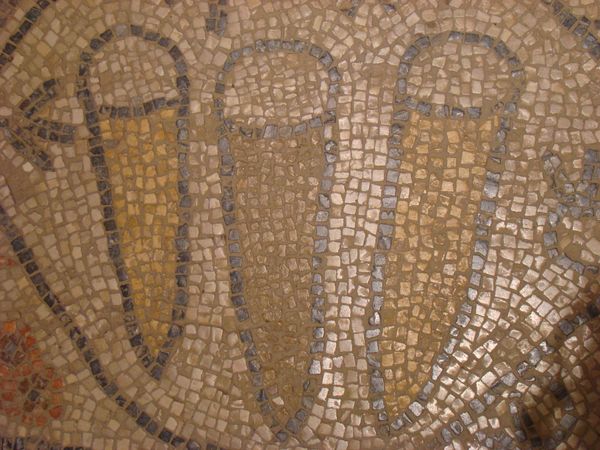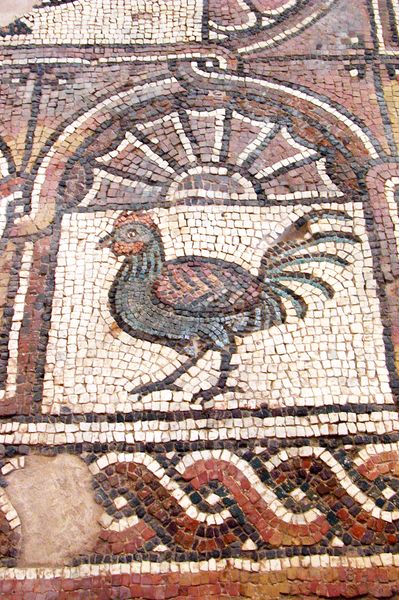
mosaic, architecture
#
mosaic
#
organic
#
landscape
#
figuration
#
architecture
Dimensions: 32 7/8 x 60 5/8 in. (83.5 x 153.99 cm)
Copyright: Public Domain
Editor: This gorgeous mosaic, called "Birds with Foliage", dates back to the late 4th to mid 5th century. The delicate detail with which someone created such a pastoral scene out of tiny pieces of stone… I’m struck by how calming it feels. What can you tell me about it? Curator: Well, immediately, considering its origins and its presence in a museum like the Minneapolis Institute of Art, we need to ask, "Whose gaze was this intended for, and how has that gaze shifted over time?" These mosaics weren’t simply decorative; they were often deeply intertwined with displays of power and wealth. Does understanding its context change how we interpret that calming feeling? Editor: I think it adds a layer of complexity. Knowing it was initially for a powerful person reframes it, almost like the "calm" was a privilege afforded to them. It raises questions about accessibility and ownership of beauty. How would the general public have encountered imagery like this at the time? Curator: Access would have been very limited, naturally. These were statements, and the messages weren't necessarily intended for widespread consumption. Think of how these images could reflect not just the patron’s taste, but also the social and political climate they wanted to project. The choice of imagery--birds, foliage, nature--speaks to something beyond pure aesthetics. What could the specific subject matter symbolize in that period? Editor: Maybe a connection to the land, or a sense of harmony and order in a world that could be chaotic? It makes me wonder if the choice of medium – mosaic – was deliberate, representing fragmented elements brought together to create a unified image, like a society? Curator: Precisely. And now it's available for public viewing, reshaping its socio-political message once again. Our discussion changes my perception of the piece. Editor: Mine too. I am left wondering what message it sends now and how people from all backgrounds interpret such images.
Comments
minneapolisinstituteofart almost 2 years ago
⋮
Scrolls of vine and acanthus leaves enclosing human or animal forms, called rinceaux, were frequently used in the borders of large mosaic compositions. The rinceaux in this mosaic segment include birds, symbolizing the soul, and pomegranates, referring to the annual return of spring and therefore the Christian hope in immortality and resurrection.
Join the conversation
Join millions of artists and users on Artera today and experience the ultimate creative platform.

